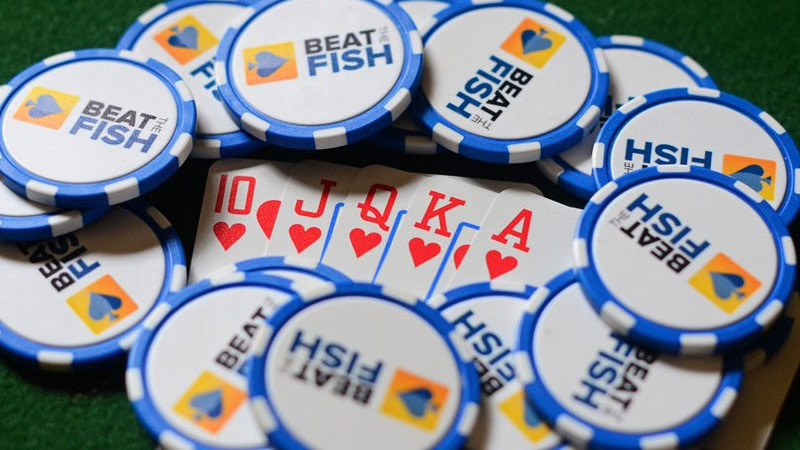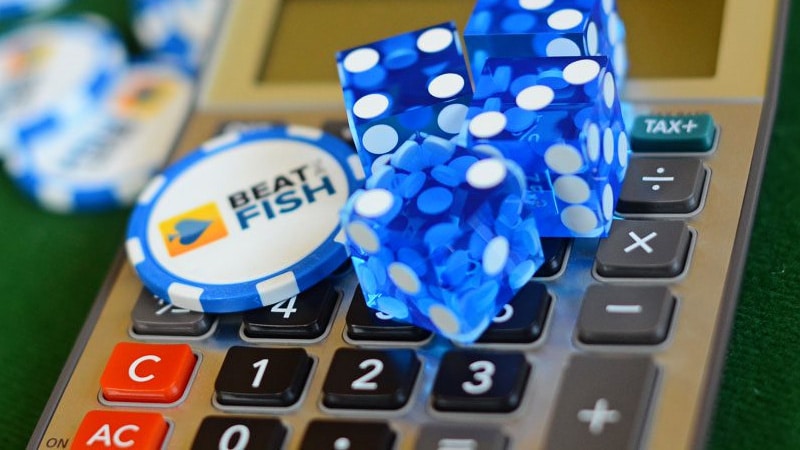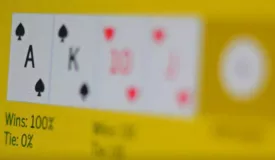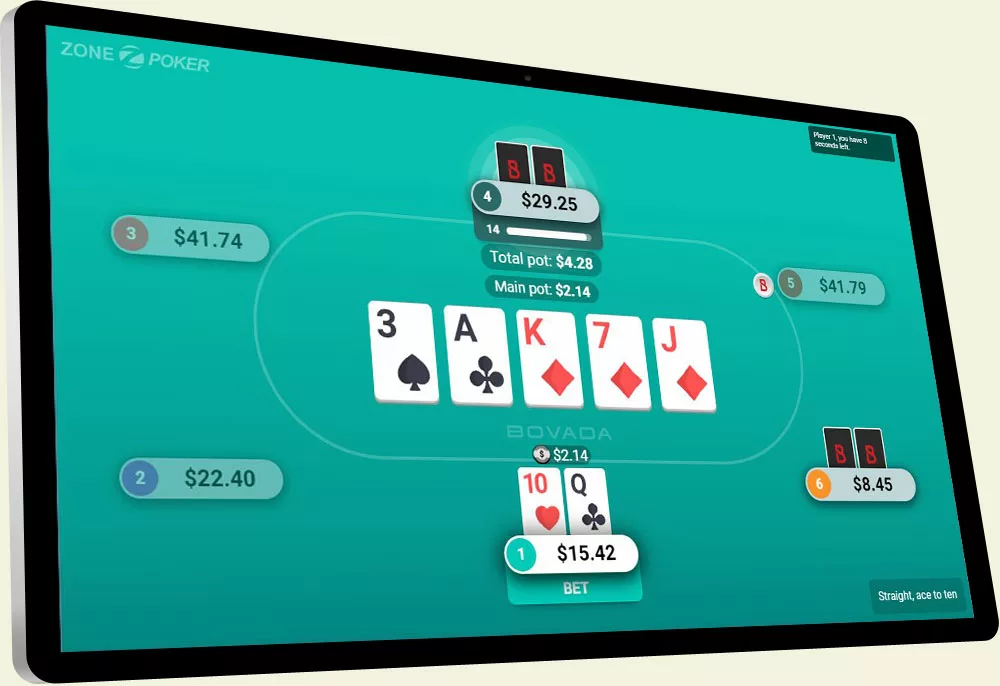A Full Guide on Playing Flushes

As one of the most powerful hands in poker hand rankings, landing a flush can be incredibly profitable. However, like most hands, it’s not a guaranteed win if you find yourself with one and you can’t assume that it will beat all opponents all the time.
As such, many players wonder what the best course of action is when playing with a flush in their hand So, if you’re struggling to make the most of your flush draws, keep reading.
Table of Contents
Firstly, What Is A Flush?
If you’re looking up a Texas Hold’em flush poker strategy, you probably don’t need to know what a flush is – but, we’re going to start out with it anyways. A flush consists of any five cards of the same suit. If the cards in your flush are in sequential order, then this is a straight flush (or a royal flush if you hold 10, J, Q, K, A suited) – and it outranks a regular flush.
If there is more than one flush at showdown, the flush that has the strongest high-card wins. So, if a player shows up with a Queen-high flush and another player has a King-high flush, the player with the King-high flush wins. Should two players have the same high card, it comes down to the second-highest card in the flush to determine the winner.
Flush Poker Strategy: Slow-Playing Flushes on the Flop
In flush poker strategy, you should first consider the odds. A quick overview shows how rare it is and why so many players end up playing too aggressively when landing a flopped flush:
- Odds of flopping a flush with any hole cards: 0.2%
- Odds of flopping a flush with suited hole cards: 0.82%
- Odds of flopping a flush with unsuited hole cards: 0%
So, there are a few situations in Texas Hold’em poker games where I would advise slow-playing your smaller flopped flushes. It’s not a hard-and-fast rule, but it does change things up amongst your opponents to keep them guessing.
When you’re out of position and you called preflop, it’s best to check if it’s checked round to you on the flop. You don’t want to lead with your flushes in this position, as it weakens the range of the cards that you would check with. Other players at the table may catch on to you leading when you flop flushes or flush draws, which could give away too much information.
Another potential tricky situation can come when you come across a pre-flop raiser who c-bets even when it’s check to them on the flop. Check-raising can make things a bit difficult for you, as your opponent may assume that you have the flush and will only remain in the hand with their strongest range. So, in many situations where c-betting is involved, it’s best to check-call.
How to Play a Flush Draw on the Flop
Now, let’s say you’ve got a flush draw. You have two suited cards such as two hearts or spades and two more have appeared on the flop. Things get a little more complicated, but it can be worth chasing down a flush.
If you’ve flopped a flush draw, the first thing you should do is determine the strength of your flush. There are two considerations you should make:
- What is the highest card in your card? Few things are worse than hitting your flush
- Can a stronger hand be made even if you do hit your flush?
Flushes are a strong hand, but you can lose a lot of money chasing a flush that could potentially be beaten. So, it’s important that you determine if it’s worth chasing by using the above criteria.
Flush Draws on a Wet Board
Another thing to consider is the texture of the board. When a board is dry in a poker game (meaning the community cards don’t doesn’t present much opportunity for several types of draws – for example a rainbow flop, with three different suits on the board), you can proceed playing how you normally would – but a wet board is where things get a bit more complicated.

If you hold a flush draw on this kind of board, raising isn’t always the best option. When you’re out of position, you’re unlikely to get called – so, even if you want to build the pot, your opponents are pretty likely to bow out. However, when you’re in position, consider being a bit more aggressive with a small raise.
Flush Poker Strategy: Using Pot Odds
If you’re keen to do a little quick math, you can look at the pot odds for landing your flush. Let’s a take a look at how this works:
First, you compare your bet size to the pot size. For example, you were to bet $20 into a pot of $80, that ratio would be 5:1. These are your pot odds. This is done by using this simple math:
- You add the size of the pot to the size of the bet: $20 + $80 = $100
- Divide that number by the size of the pot: $100/$20 = 5
- Then, you put that into a ratio, resulting in 5:1.
More examples include:
- Betting $1 into a $8 pot: 8:1
- Betting $.25 into a $1.75 pot: 7:1
- Betting $.50 into a $3 pot: 6:1
Now, you take a look at the probability of hitting your draw on the next card:
- There are 47 cards in the deck that we don’t have any information about. This is because there are three cards on the flop and 2 in our hand.
- There are just 9 cards that will complete our flush.
- The remaining 38 cards won’t.
- So, this gives us a ratio of 4:1. Remember this figure for whenever you have a flush draw.
If your opponent is presenting 5:1 pot odds and you have a 4:1 chance of completing your draw, then, in the long run, you would make money in that situation – so, the best decision is to call.

However, if the pot odds are lower than the odds of you completing your flush, then it’s best to fold. Once you get used to the math of working out pot odds, then you’ll be able to do this quite quickly at the table.
What If You Have A Flush Draw With Just One Suited Hole Card?
This can be super exciting, and I’m very guilty of trying to play through a single-card flush draw. I would only advise doing this if you’re holding and Ace or a King. It’s very risky and the pot odds are almost never going to be in your favor – so, it’s a good idea to play it safe and avoid chasing here.
Flush Poker Strategy Dos and Don’ts
How you play your flush or flush draw will vary based on the specific circumstances of your hand. However, there are a few hard-and-fast rules that you should consider as takeaways from this article – especially if you’re new to poker and wary of working out odds or analyzing the board texture.
Flush Poker Dos and Don’ts
- When you have hole cards that have the potential to make the nut flush (Ace-9, for example), you should try to see the flop
- Play suited poker hands often when you’re in position
- Give up chasing your flush draw if it becomes too expensive
- Accept when your flush has been beat; don’t try to force players who are likely to have a full house (especially when there is a pair on the board) or better flush to fold
- Small flushes and flush draws aren’t worth getting too attached to so, if it’s getting to expensive to see them through, it’s best to fold

Bethany has been working in online gambling for over 13 years. She got her start in the industry as her first job after graduating from the Professional Writing Program at York University. Having written for many online gaming publications and worked with top casino operators, she has unique insight into the gambling market. Bethany maintains a personal interest in iGaming as she continues to play poker online as a hobby.









